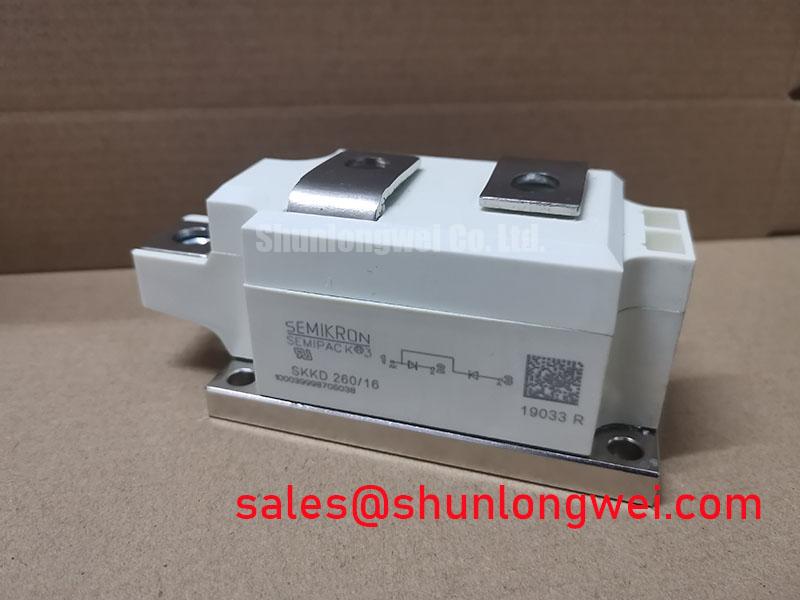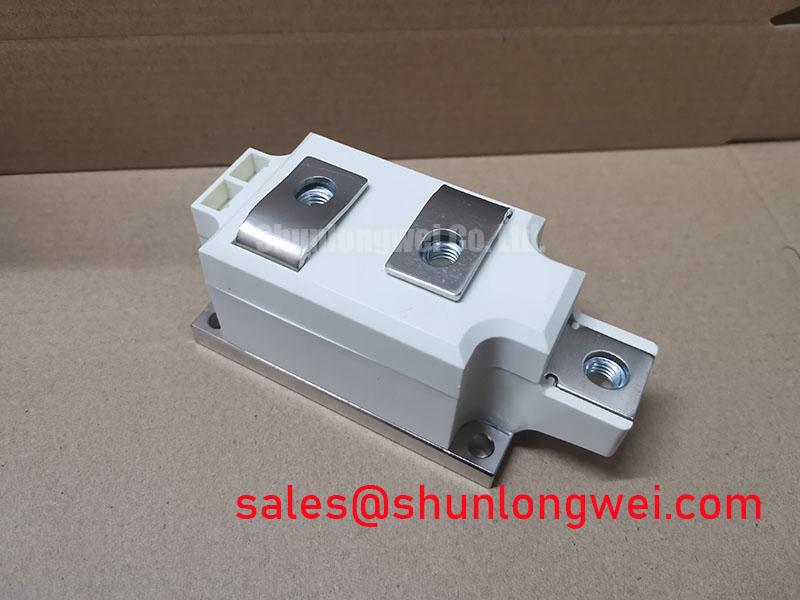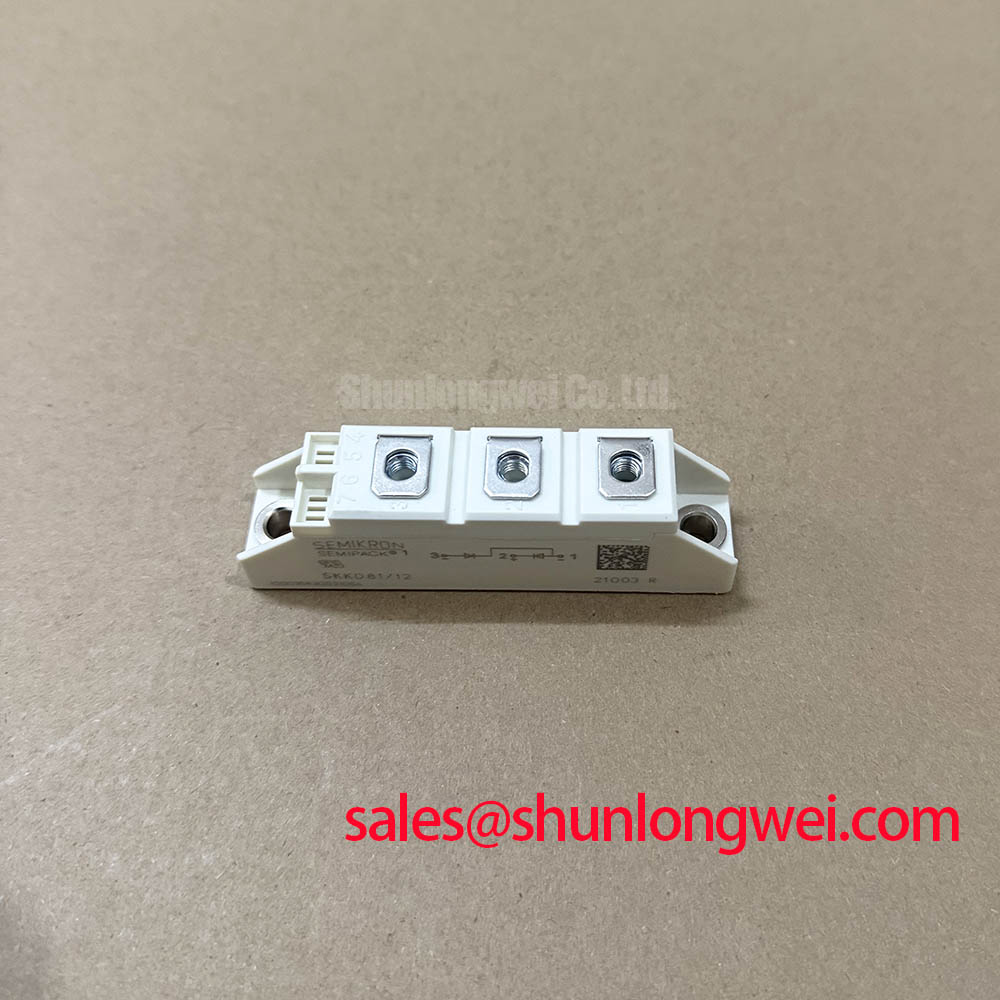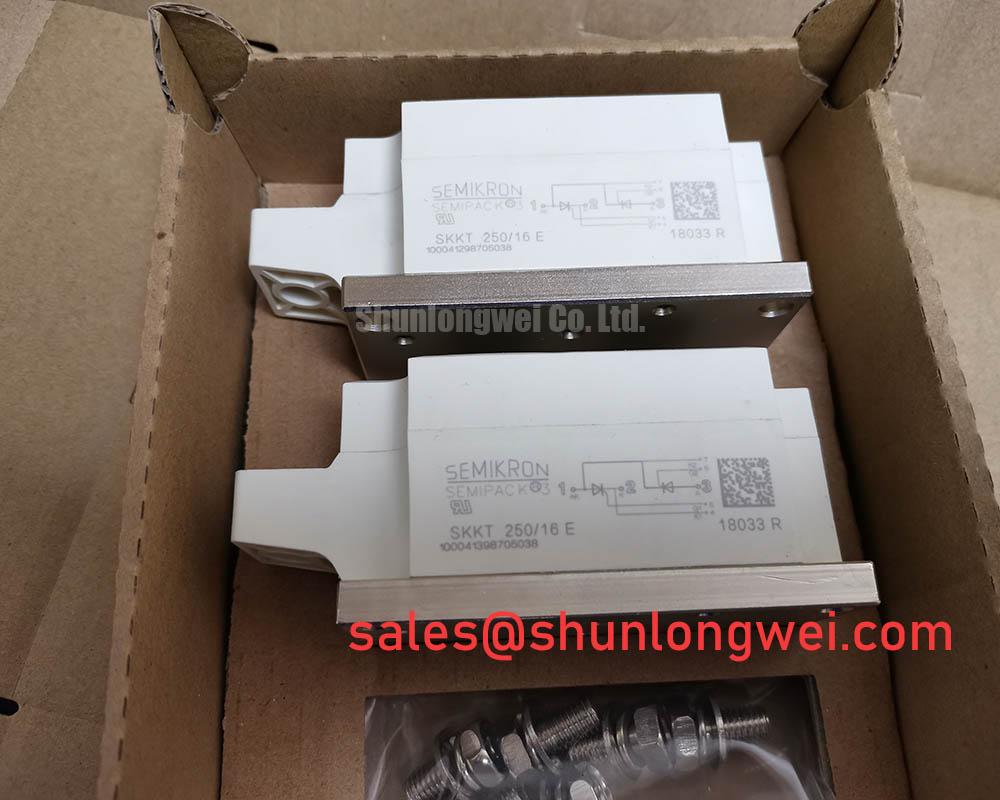Content last revised on November 19, 2025
SKKD260/16 | 1600V Rectifier Diode Module | Engineering Deep Dive on Reliability & Thermal Performance
Introduction: A Foundation for High-Reliability Power Conversion
Engineered for Longevity in Demanding High-Voltage Systems
The SKKD260/16 is a high-performance dual diode module that delivers exceptional long-term reliability in high-voltage rectifier circuits, anchored by its advanced pressure contact technology. It provides key specifications of 1600V | 260A | Rth(j-c) 0.12 °C/W, ensuring a robust foundation for demanding power systems. The primary engineering benefits include superior thermal cycling capability and the elimination of solder fatigue failure modes. For engineers designing systems like heavy-duty motor drives, the critical question is how to ensure operational integrity over years of thermal stress; the SKKD260/16 directly addresses this by replacing failure-prone solder joints with a resilient pressure contact system. For demanding industrial drives operating on 690V AC lines, this 1600V module provides the optimal balance of voltage headroom and proven mechanical reliability.
Key Parameter Overview
Decoding the Specifications for System Robustness
The technical specifications of the SKKD260/16 are tailored for high-reliability power rectification. The parameters below detail the module's electrical, thermal, and mechanical capabilities, providing the essential data for system design, simulation, and thermal management strategies.
| Electrical Characteristics (per diode at Tvj = 25 °C, unless otherwise specified) | |
|---|---|
| Repetitive Peak Reverse Voltage (VRRM) | 1600 V |
| Average Forward Current (IFAV) at Tcase = 85 °C | 260 A |
| RMS Forward Current (IFRMS) | 450 A |
| Forward Surge Current (IFSM), t = 10 ms | 7500 A |
| I²t value, t = 10 ms | 281000 A²s |
| Thermal and Mechanical Characteristics | |
| Thermal Resistance, Junction to Case (Rth(j-c)) | 0.12 °C/W |
| Operating Junction Temperature (Tvj) | -40 to +150 °C |
| Isolation Test Voltage (VISOL), 50/60 Hz, RMS | 3000 V |
| Mounting Torque | 10 ± 1 Nm |
| Case Designation | A 22 |
Download the SKKD260/16 datasheet for detailed specifications and performance curves.
Application Scenarios & Value
System-Level Benefits in Industrial Power Rectification
The SKKD260/16 is optimally designed for the input stages of high-power industrial equipment where reliability is non-negotiable. Its primary value is demonstrated in applications subjected to frequent on/off cycles or fluctuating loads, such as Variable Frequency Drives (VFDs) for large motors, industrial welding power supplies, and uninterruptible power supplies (UPS).
Consider the challenge in a three-phase rectifier for a 150 kW motor drive. The repeated inrush current during motor starts and stops creates significant thermal stress on the rectifier diodes. The SKKD260/16's high forward surge current rating (IFSM) of 7500A provides a substantial safety margin, preventing failure during these stressful events. More importantly, its pressure contact design ensures that the thermal cycles do not degrade the chip-to-baseplate interface over time, a common failure point in conventional soldered modules. This translates directly to increased uptime and reduced field service costs. While the SKKD260/16 is ideal for such high-power systems, for applications with lower current requirements, the related SKKD162/16 offers similar reliability features in a lower amperage package.
Technical Deep Dive
A Closer Look at Pressure Contact Technology for Long-Term Reliability
What is the primary benefit of its pressure-contact design? Enhanced long-term reliability by eliminating solder fatigue. Conventional power modules rely on solder layers to connect the semiconductor chip to the Direct Bonded Copper (DBC) substrate and the substrate to the baseplate. Over thousands of thermal cycles, the differing coefficients of thermal expansion (CTE) between these materials cause stress, leading to solder crack propagation and eventual thermal failure. The SKKD260/16 circumvents this fundamental wear-out mechanism entirely.
This design utilizes a precisely calibrated mounting force to press the internal components together, ensuring a consistent and reliable electrical and thermal connection. Think of it as the difference between a welded joint and a high-tensile bolted connection in a mechanical structure. While the weld is strong initially, it can be a point of failure under repeated vibration and stress. The bolted connection, when properly torqued, maintains its integrity under dynamic loads. Similarly, pressure contact technology provides a robust, fatigue-free interface that significantly extends the module's operational lifetime, making it an indispensable choice for systems where longevity and reliability are paramount.
Frequently Asked Questions (FAQ)
How does the pressure contact design of the SKKD260/16 contribute to a lower total cost of ownership?
The pressure contact system eliminates solder fatigue, a primary wear-out mechanism in power modules. This drastically increases the module's power cycling capability and operational lifespan, leading to fewer field failures, reduced maintenance expenses, and minimized system downtime over the life of the equipment.
What is the significance of the 1600V VRRM rating for industrial applications?
A 1600V repetitive peak reverse voltage rating provides a crucial safety margin for systems operating on 575V, 600V, or 690V AC industrial lines. This high blocking voltage capability ensures the device can withstand the voltage transients and overvoltages common in harsh industrial electrical environments, enhancing the overall robustness of the power converter.
How does the Rth(j-c) of 0.12 °C/W impact heatsink selection and thermal design?
The low thermal resistance from junction to case signifies highly efficient heat extraction from the semiconductor diode. A lower Rth(j-c) value means that for a given power loss, the junction temperature will be lower. This gives engineers two options: either run the device at higher currents for a given heatsink, or use a smaller, more cost-effective heatsink to maintain a safe operating temperature, which is critical for improving overall system power density. For a deeper understanding, explore resources on unlocking thermal performance.
Engineering Support and Component Sourcing
Your Partner in High-Reliability System Design
Integrating the SKKD260/16 into your power system design provides a foundation of reliability backed by decades of field-proven technology from a leading manufacturer, Semikron-Danfoss. When your design requires robust performance in high-voltage, high-current rectifier applications, specifying a module with superior thermal and mechanical endurance is a critical first step. For technical inquiries, design support, or to discuss sourcing for your next project, please contact our team to access detailed documentation and engineering resources.















